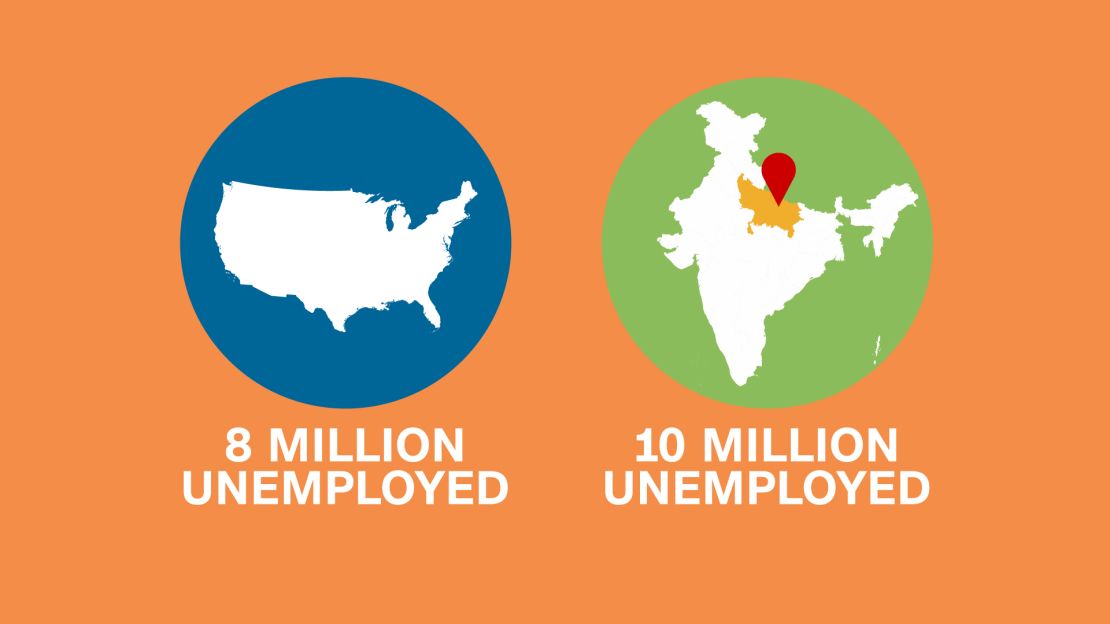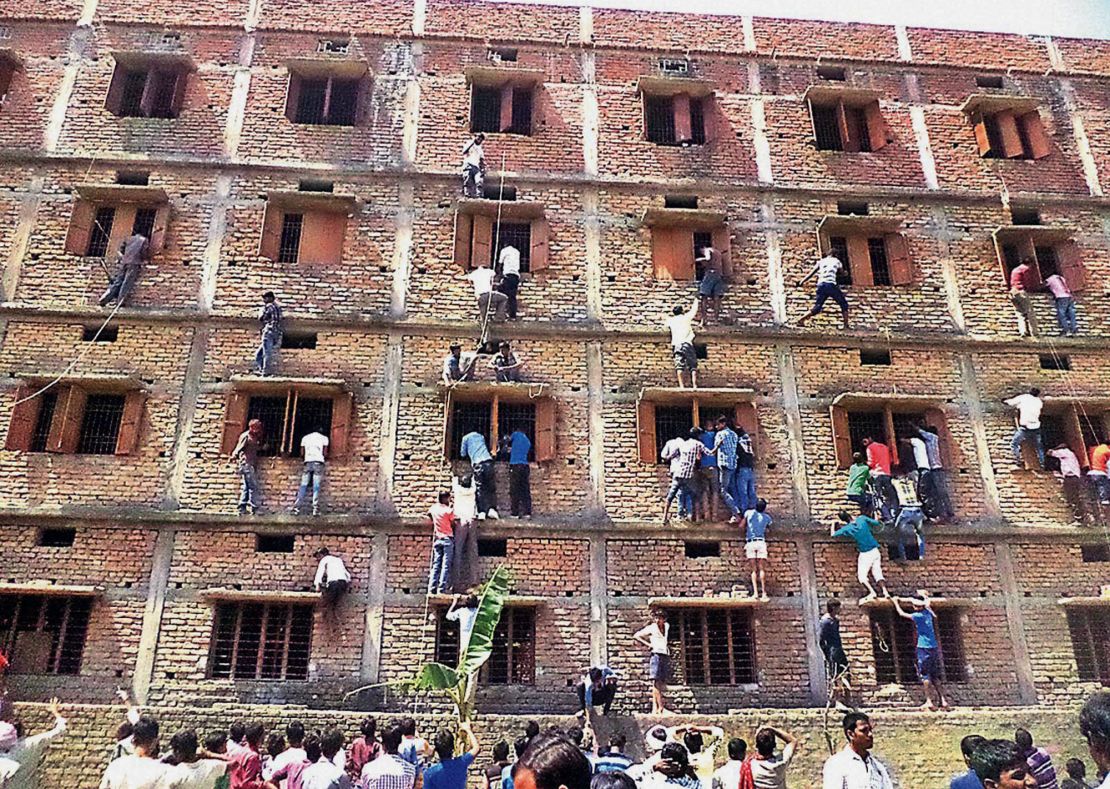Story highlights
Recently the Uttar Pradesh government received 2.3 million applications for 368 low-ranking positions
An ever-expanding pool of jobseekers and the sheer size of the gray economy make it difficult to secure legal, gainful employment
India might be an economic success story but it has a long way to go with its labor market
When the Indian state of Uttar Pradesh advertised 368 government jobs last month, something very strange happened: 2.3 million applications flooded in. These weren’t spectacular, life-changing opportunities; most of the jobs were those of “peons” or office boys, paid around $240 a month.
Some of the applicants, we’re told, even had doctorates.
If you’ve ever been to an Indian government office, you won’t miss the peons. They are lowly bureaucrats, often dressed in shabby khaki uniforms, dispatched to fetch sweetened masala tea or track down obscure and dusty files.
But they are also powerful gatekeepers. It is well known in India that keeping a peon happy will likely ensure your paperwork ends up with the right signatures and your meetings actually take place without a grueling wait.
But even so… 2.3 million applications? That’s 6,250 applicants for each job!
The eye-catching numbers reveal serious problems for India.
Jobs crisis
There is no doubt that India has a jobs crisis. According to India’s Labor and Employment Ministry, India’s total workforce comprises 485 million people. 93% of these workers are in what is known here as the “informal sector,” often a euphemism for off-the-grid work with no real contracts, job security, pensions, or health care.
To these mind-numbing numbers you can add one more: every year, between 10 and 12 million more Indians enter the workforce. This number will keep increasing given the fact that the average Indian is a very young 27-years-old.
It is a painful truth that India simply isn’t creating enough jobs for all these new job-seekers.
Another painful truth is that an alarming number of these job-seekers aren’t even very good. According to India’s National Skill Development Mission, only 4.69% of India’s workforce has undergone any formal skill training. Compare that with the U.S. (52%), the UK (68%), Germany (75%), Japan (80%) or South Korea (95%).

Root cause?
India produces 700,000 engineering graduates every year. But when India’s best tech companies hire some of these graduates they usually spend a number of months training them so they are up to scratch. And that’s the case for the ones from the best schools; many of the rest don’t even get a job in their chosen field.
That’s the other painful truth about India: schools. In the Times Higher Education World University Rankings, out last week, there were no Indian universities in the top 200. Two universities were ranked between 200th and 400th; only eight others made it between 400th and 500th.
Despite the relatively low global rankings of Indian universities, seats are highly coveted, and competition is unprecedented.
The famous Indian Institutes of Technology collectively have about 10,000 seats available annually, for which some half a million students compete – some of them try for a second or third year running. That’s an admissions rate of 0.2%, making it mathematically 30 times easier to get into Harvard or Yale. The applicant pools, of course, are apples and oranges.
Even the humanities colleges are out of reach for most – some of the top Delhi universities boast “cut-offs” as high as 99%. A student would need to be statistically perfect – ironic, if your subject is English literature – to get in.
With rote-learning, intense competition and pressure comes, you guessed it, cheating. Every spring in India we learn of mass cheating scandals. Parents scaling university walls to get “cheat-sheets” to their children; illegal “donations” to get people into coveted colleges; there are entire websites devoted to cheating devices like hidden earpieces and erasers with hidden chips.

Security, healthcare – and a slice of the pie
For most Indians, the path to a job is littered with these stories: cheating, intense competition, poor schools, few good jobs, and broken systems of social security. Perhaps that explains why 2.3 million people would opt for the security of a boring “peon” job – stable pay, state pension and healthcare.
There’s also the small matter of corruption and bribery. According to Transparency International, only 84 countries are less corrupt than India. Despite recent crackdowns, graft is rampant. And it is well known that peons often get a slice of the pie.
It is little surprise then that the recent World Economic Forum report on global competitiveness rates India so badly. India ranks 90th in the world for higher education and training; 103rd in the world for labor market efficiency; 120th in the world for technological readiness.
We often tell stories of India’s immense potential, and how it is the world’s fastest growing major economy. That’s one side of the story.
There is no doubt that India could be one of the drivers of global growth in the 21st century. But it has a long, long way to go, and the road begins with education, skills training, and jobs.



